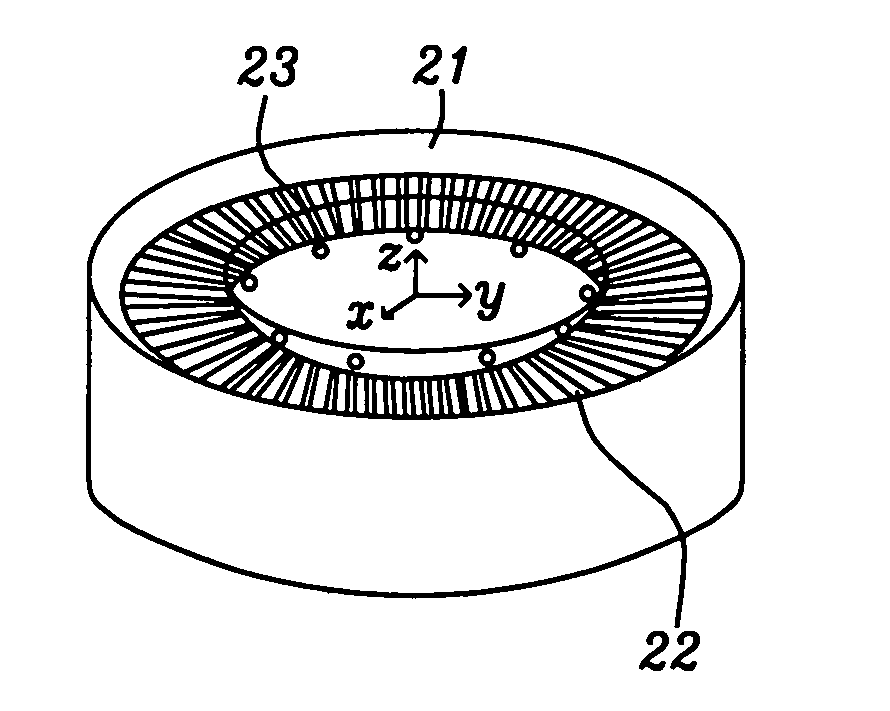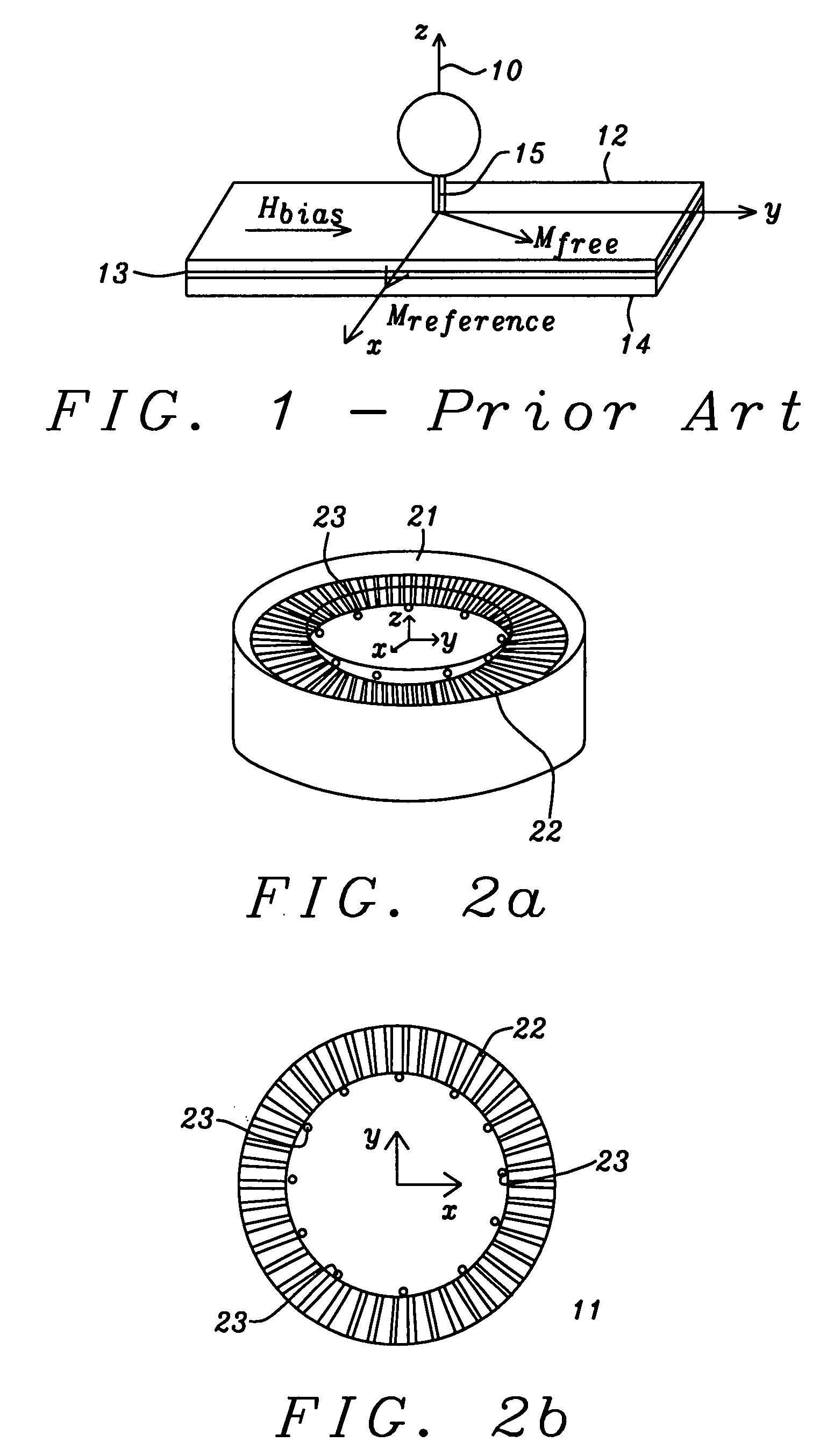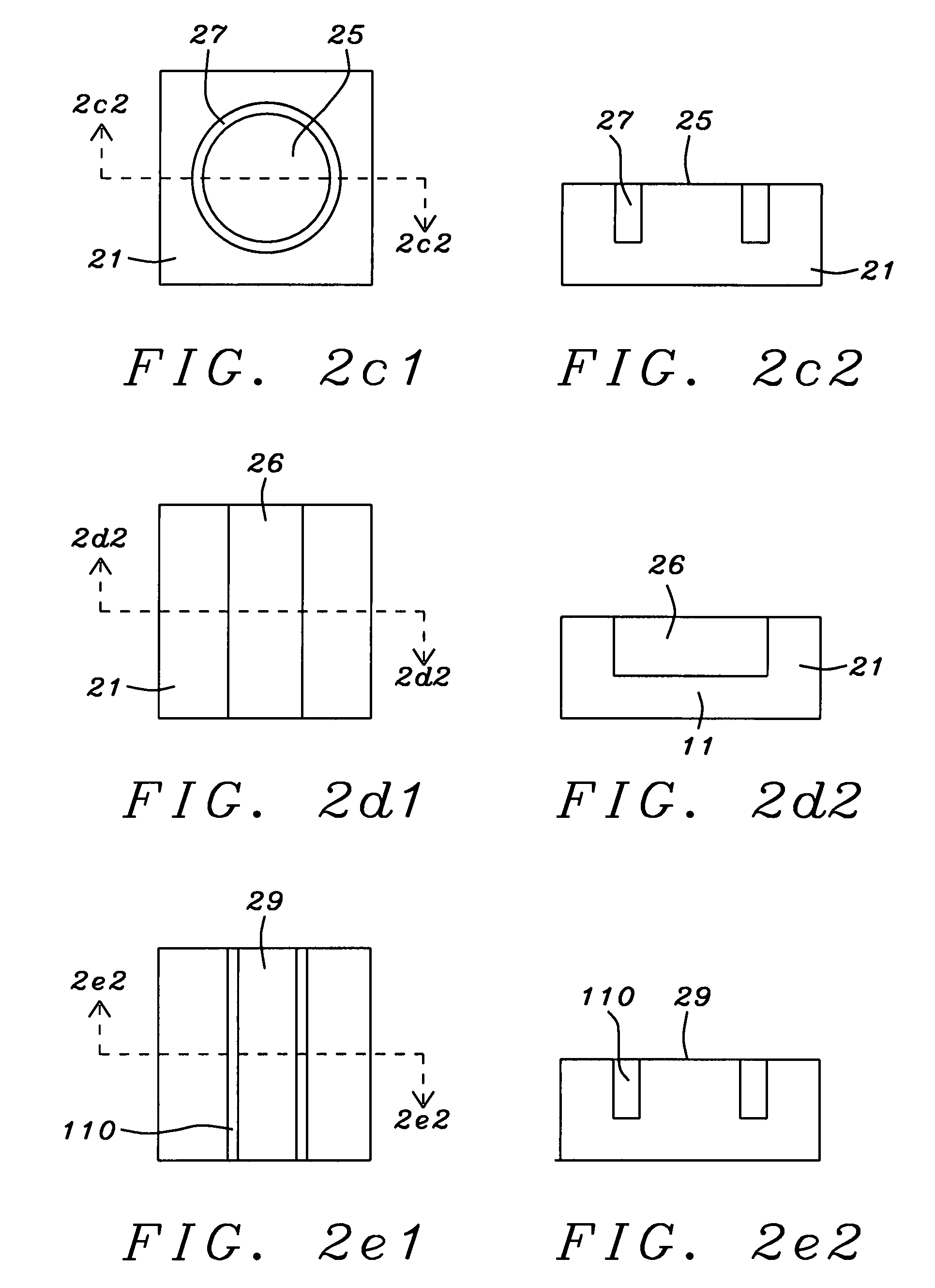Discrete contact MR bio-sensor with magnetic label field alignment
a biosensor and magnetic label technology, applied in the field of microparticle assays, can solve the problems of uncontrollable label binding, unfavorable one-on-one binding, and large randomness of binding sites, so as to minimize the effect of label variation, reduce noise, and eliminate signal fluctuations
- Summary
- Abstract
- Description
- Claims
- Application Information
AI Technical Summary
Benefits of technology
Problems solved by technology
Method used
Image
Examples
embodiment 2
[0095]Optionally, layer 99 may be above surface 97 before structure 92 is added on top. , edge 98 connects bottom surface 11 and top surface 97. Protection layer 98 is on surfaces 11, 94 and, optionally, 97. On top of layer 98, there is, optionally, another biological layer 99, which serves the purpose of selectively binding the target molecules, cell or other biological entities on the surfaces. Layers 98 and 99 can be coated over the entire confinement structure.
[0096]FIG. 9c shows optional cover structure 91 that is physically fixed on top of surface 97 and layer 98, forming a closure space together with edges 94 and floor 11. This closure helps to confine liquid samples within the test space. Optionally, layer 99 may be deposited over surface 97 before structure 91 is added.[0097](1) Sample Injection
embodiment 5
[0098]The liquid sample can be dripped directly into the testing structure or it can be made to flow into testing structure by exerting pressure or by capillary force of conducting paths. The magnetic labels or magnetic label coated biological entities are attracted into the testing confinement by the applied magnetic field with or without a funneling structure 20 as in Embodiments 4A4C.[0099](2) Sample Preparation
embodiment 6
[0100]The sample is a liquid containing magnetic label coated biological entities. Free labels may also be present in the sample.[0101](3) Field Application
[0102]Embodiment 7A—The magnetic field that magnetizes the magnetic labels is generated by permanent magnets. A gradient near the edge of the field serves to line up the magnetic labels (or biological entities coated with magnetic labels) against the floor and the wall. Said gradient is determined by the shape of the permanent magnets. An example (not limiting) is a thin cylinder shaped permanent magnet whose magnetization is perpendicular to the cylinder's flat surface. There is optionally a soft magnetic structure on top of the permanent magnet structure to assist magnetic field and gradient generation. Additional options are to taper the magnet shape in order to enhance the gradient and to include an embedded soft magnetic material structure within the substrate. The embedded structure can be magnetized by the permanent magnet...
PUM
| Property | Measurement | Unit |
|---|---|---|
| particle size | aaaaa | aaaaa |
| diameter | aaaaa | aaaaa |
| diameter | aaaaa | aaaaa |
Abstract
Description
Claims
Application Information
 Login to View More
Login to View More - R&D
- Intellectual Property
- Life Sciences
- Materials
- Tech Scout
- Unparalleled Data Quality
- Higher Quality Content
- 60% Fewer Hallucinations
Browse by: Latest US Patents, China's latest patents, Technical Efficacy Thesaurus, Application Domain, Technology Topic, Popular Technical Reports.
© 2025 PatSnap. All rights reserved.Legal|Privacy policy|Modern Slavery Act Transparency Statement|Sitemap|About US| Contact US: help@patsnap.com



